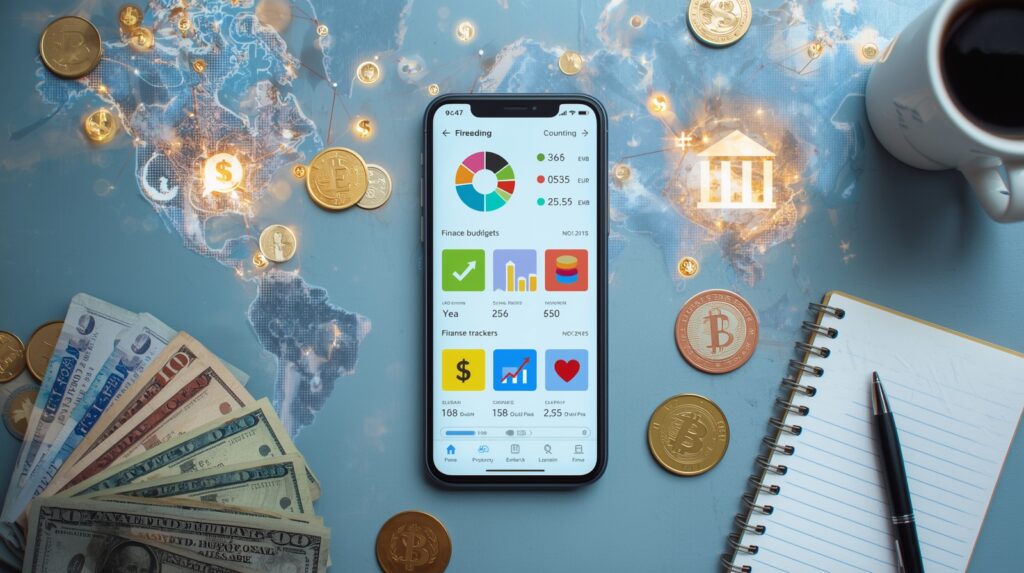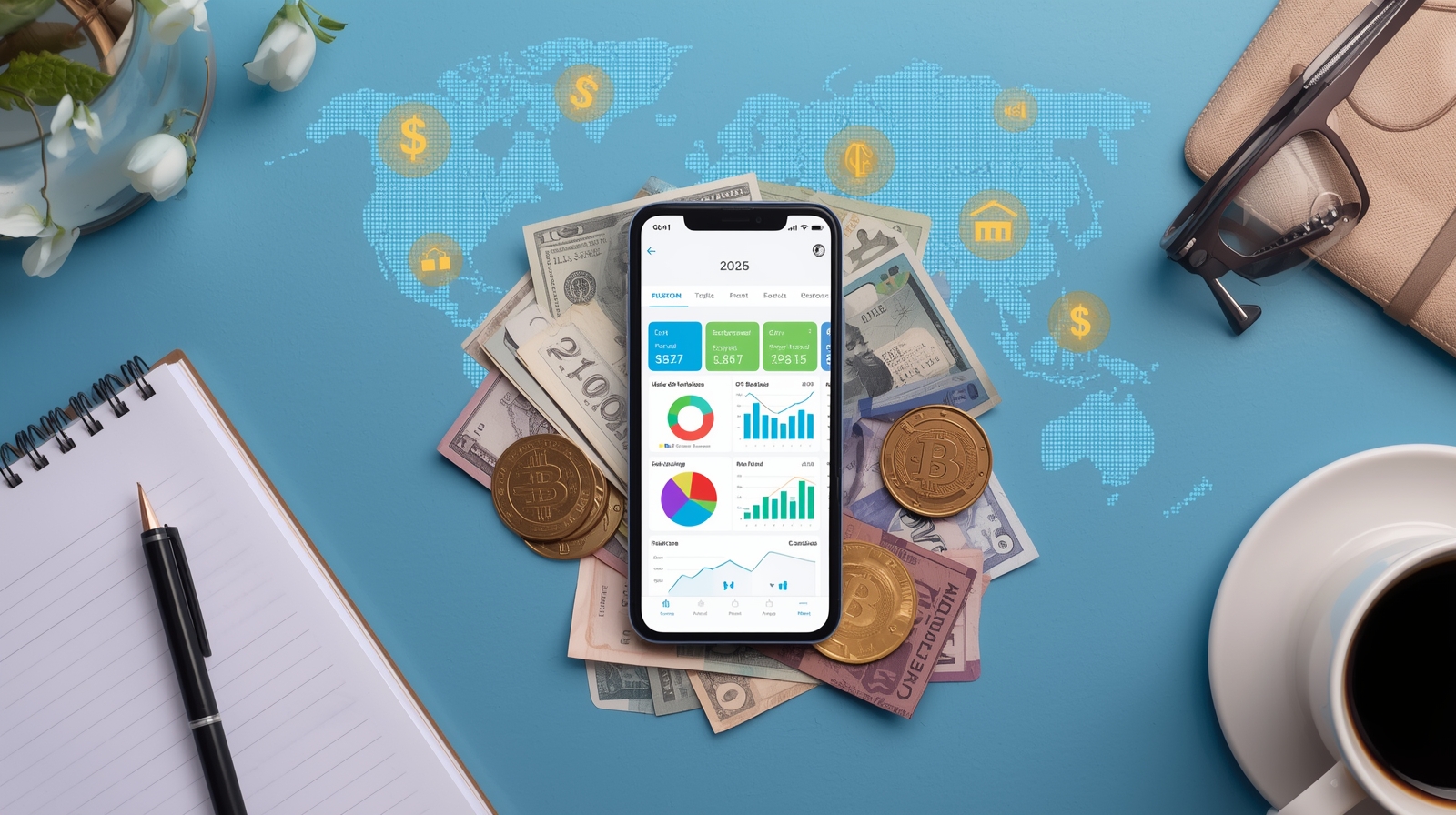Managing money well is harder than it seems. Income, expenses, savings, debt—all of them move fast. But if you use the right tools, you can gain control, reduce stress, and reach your goals. In this article, we’ll first look at common problems people face with budgeting. Then we’ll show the best budgeting apps in 2025—and how each solves those problems.
The Big Problems People Face with Money
1. Lack of visibility
Many people don’t know exactly where their money is going. They have bank accounts, credit cards, subscriptions—and often lose track of spending. Without visibility, it’s impossible to budget well.
2. Overwhelming manual work
Entering every transaction by hand, remembering due dates, dragging through spreadsheets—these tasks take time. And many give up after a while, because it feels tedious.
3. Inflexible budgeting methods
Some methods force rigid categories, fixed budgets, or heavy discipline. If your job, income, or lifestyle changes (as it often does), rigid budgets break down.
4. Security and privacy concerns
Sharing financial data with apps can be scary. People worry about hacks, data leakage, or apps misusing banking/history info.
5. Costs and hidden fees
Some apps look free but charge for syncing banks, removing ads, or offering essential features. Others are expensive or have confusing subscription models.
What to Look For in a Good Budgeting App
To avoid the above problems, a good app should offer:
- Automatic tracking & bank sync so you don’t have to enter everything by hand.
- Custom budget categories and flexible spending limits so you can adapt.
- Goal setting & progress tracking, whether for saving, paying debt, or planning for something big.
- Real-time updates and alerts (overspending, upcoming bills) so you’re never surprised.
- Strong security & privacy: encryption, two-factor authentication, transparent policies.
- Free or affordable pricing; clear understanding of what’s free vs paid. Hidden fees are a major turn-off.
The Best Budgeting Apps of 2025
Here are top apps reviewed in 2025, and how they solve the common problems above. Some are global, others better in certain regions—but many work worldwide with manual input.

You Need a Budget (YNAB)
What it does well:
YNAB forces you to give every dollar a job. That means each amount of income is assigned to categories (rent, groceries, savings) before spending. If something changes, you adjust. This helps with visibility and flexible budgeting. It also has solid support materials for learning how to budget.
What to know:
It’s not free. There’s a subscription fee (about US$14.99/month or ~US$109/year) after a trial. That cost can be offset by how much you save or how much stress you avoid. Also, bank sync in some countries may be limited—you might need to enter data manually.
Monarch Money
What makes it good:
Monarch offers dashboards that show everything: your accounts, investments, debts. It lets you set goals, track progress, and even collaborate (for couples or families). It is praised for easy visual presentation, good UX (user experience), and usefulness for both beginners and more serious budgeters.
Watch out for:
It’s paid. The monthly fee can be steep for some, especially if you’re used to free apps. Also, bank syncing is more reliable in some regions than others. If your bank isn’t supported, manual data entry is needed.
Goodbudget
Why people like it:
Goodbudget uses the “envelope system” in a digital way. You divide your money into virtual envelopes—for rent, groceries, fun, etc. This helps avoid overspending and gives you awareness of what you have left. Sharing budgets (for families or couples) is also a plus.
Limitations:
Some features are behind a paywall. The free version may be enough for basic users, but if you want more flexibility or more envelopes/categories, the paid version is needed. Also, investment tracking or advanced reports are weaker compared to apps like Monarch or YNAB.
PocketGuard
What stands out:
PocketGuard is simple and practical. Its “In My Pocket” view shows how much money you safely have left after bills, goals, and necessities. For people who don’t want to spend hours with budgeting, this gives fast clarity.
Things to note:
Some advanced features cost money. Also, syncing errors or delays happen with certain banks. For those who want heavy customization and deep analysis, PocketGuard might feel too lightweight.
Other Notables: Mint, Honeydue, etc.
- Mint is a long-standing favorite. It has bill reminders, alerts, and some free features that are good for beginners. However, it may have ads, and sometimes privacy concerns.
- Honeydue is best for couples or shared households. It allows joint visibility of expenses, communication around money, and limits. It solves the problem of “two people, separate debt but shared bills.”
Which App Is Best for Your Situation?
It depends on what problems you face most. Here are some suggestions:
| If your biggest struggle is… | Best choices |
|---|---|
| You lose track of monthly spending | PocketGuard, Mint |
| You want to plan long-term, set savings/debt goals | YNAB, Monarch Money |
| You share expenses with someone (partner, family) | Goodbudget, Honeydue |
| You hate manual entry | Apps with strong bank syncing: Monarch, Mint |
| You worry about cost or privacy | Try free apps first; read the terms; possibly manual entry with secure apps |
Security, Privacy, and Cost: What to Check
When choosing, don’t just look at design or features. Ask:
- Is your data encrypted at rest and in transit?
- Does the app offer two-factor authentication or biometric login?
- How transparent is the pricing (free tier vs paid tiers)?
- Does the app respect your privacy (not selling data)?
- Where are the servers (which country)? Laws differ by country.
Final Thoughts & Recommendations
Budgeting apps are tools. The best one won’t fix everything—but the right one for your needs can make a big difference. If I were picking for myself in 2025, here’s how I’d narrow:
Start with what irritates you: Do you hate forgetting bills? Use an app with alerts. Do you want to see everything in one place? Use one with strong bank sync or manual import. If cost is an issue, try free/low-cost apps first, see when you feel limited, then consider paying.
If I had to pick one for most people, I’d lean toward Monarch Money if you want visuals, goal tracking, and flexibility, or YNAB if you want serious discipline and want to build strong budgeting habits.
References
- “Best Budgeting Apps of 2025 – Forbes Advisor.” Forbes Advisor, May 2025.
- “7 Best Apps for Budgeting in 2025 | The Jotform Blog.” Jotform, 2025.
- “What to Look For in a Budgeting App.” CNBC Select.
- “Best Budgeting Apps of 2025” – CNBC Select.
- “10 Best Budgeting & Money-Saving Apps in 2025 | IBTimes UK.”
